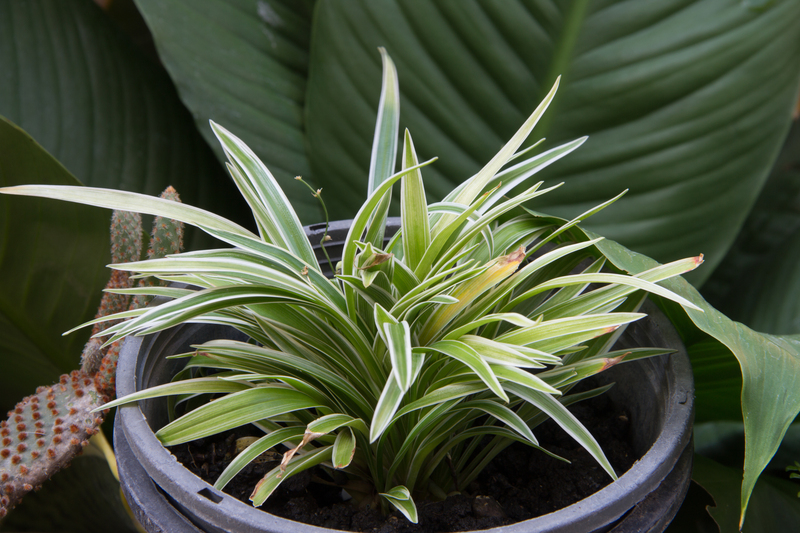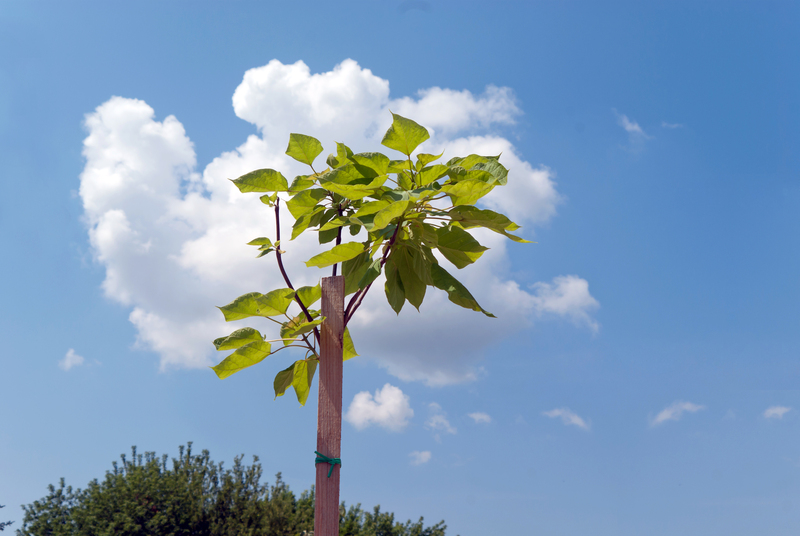Ensuring Winter Survival for Your Beloved Garden Plants
Posted on 17/09/2025
Ensuring Winter Survival for Your Beloved Garden Plants
As the golden hues of autumn give way to the cold embrace of winter, every dedicated gardener faces the challenge of preserving their cherished plants until spring's return. Whether your garden flaunts vibrant perennials, delicate roses, or newly planted saplings, implementing smart strategies ensures your beloved garden plants thrive despite the season's chill. In this comprehensive guide, we'll walk you through essential steps to protect your garden beauties, maximize their winter survival, and help them emerge healthier than ever when warmer days arrive.

Understanding Winter Threats to Garden Plants
Winter weather poses unique risks for all types of garden plants. Understanding the threats is the cornerstone for their seasonal protection. The primary hazards include:
- Cold Temperatures: Sudden freezes or consistently low temperatures can damage delicate plant tissues.
- Frost Heaving: Soil expansion and contraction due to freeze-thaw cycles can push roots above the soil surface.
- Drying Winds: Winter winds draw moisture from leaves and branches, causing desiccation.
- Heavy Snow and Ice: Accumulation can break branches, flatten shrubs, and damage plant structures.
- Limited Sunlight: Short days and low sun angles can reduce photosynthesis, impairing plant vigor.
Ensuring winter survival for your beloved garden plants demands a blend of preparation, protection, and ongoing care. Next, let's explore effective strategies to minimize these risks.
Preparing Your Garden for Winter
Start with a Thorough Autumn Cleanup
Remove fallen leaves, decaying plant material, and any diseased foliage from garden beds. Why is this important? Overwintering pests and pathogens often hide in garden debris, where they can reemerge stronger in spring. A clean slate reduces disease pressures and pest problems, supporting your garden plants' winter survival.
Mulch: The Ultimate Winter Blanket
Mulching is a proven method for protecting your beloved garden plants throughout winter. Apply a thick, insulating layer of organic mulch (such as straw, shredded leaves, or bark chips) around the base of your plants. This provides multiple benefits:
- Temperature Regulation: Mulch stabilizes soil temperatures, preventing damaging freeze-thaw cycles.
- Moisture Retention: It conserves moisture during dry, cold spells.
- Weed Suppression: Fewer weeds means less competition for precious resources.
Tip: Wait until the ground is consistently cold (but not frozen) before applying mulch. This timing ensures rodents or other garden pests don't make homes beneath the cozy layer.
Protecting Specific Types of Garden Plants
Perennials: Defending Your Reliable Beauties
Many perennials naturally enter dormancy to withstand winter, but a bit of help goes a long way in ensuring their winter survival. Consider the following steps:
- Cut back faded stems to 4-6 inches, unless they provide winter interest or food for wildlife.
- For less hardy varieties, cover crowns with extra mulch, leaves, or even an inverted flowerpot.
- If your perennials are frost-sensitive, consider lifting and storing them indoors in a cool, dark place.
Roses: Special Attention for Garden Royalty
Roses need particular care to survive the stress of winter. Here's how to protect these treasured plants:
- Stop fertilizing by late summer to allow new growth to harden off.
- Water thoroughly in fall, as dry plants are less resilient against cold.
- Mound soil or compost around the base of each bush, then cover with mulch or straw.
- For extreme cold, use rose cones or burlap wraps for added insulation.
Deciduous Shrubs and Trees: Bark and Bud Protection
Ensuring the winter survival of young or sensitive shrubs and trees often means shielding them from sunscald (bark splitting) and animal damage:
- Wrap trunks with commercial tree wrap or burlap in late fall, removing it in early spring.
- Place wire mesh around trunks to prevent gnawing by rodents or deer.
- Mulch the root zone--avoid piling mulch directly against stems.
Evergreens: Combating Desiccation and Breakage
Evergreens remain active year-round and continue to lose water through their needles or leaves. Here's how to help:
- Water thoroughly before the ground freezes.
- Apply anti-desiccant sprays to prevent moisture loss in exposed locations.
- Shield plants from harsh winds with burlap screens or by planting windbreaks.
- Gently brush off snow after storms to prevent bending branches, but never try to break off ice, which could damage the tissue.
Container Plants: The Portable Problem
Plants grown in containers are more susceptible to freezing temperatures, as roots are less insulated than those in the ground. For maximum winter survival:
- Move pots to sheltered locations (against house walls, in garages, or cold frames).
- Insulate pots with bubble wrap, bags of leaves, or even bury them in the ground up to the rim.
- Water sparingly, as overwet soil can freeze and harm the roots.
Watering: A Crucial, Often Overlooked Step
Moisture is life. Many gardeners mistakenly stop watering as temperatures cool, yet late fall watering is vital for ensuring your winter garden survival. Dry roots are more vulnerable to freeze damage. Thus:
- Water deeply before the ground freezes, especially for evergreens and newly planted specimens.
- Avoid overhead watering in late afternoon or evening; ice on leaves invites fungal diseases.
DIY Plant Covers and Season Extenders
Sometimes, nature needs a helping hand. Season extenders like cloches, cold frames, and row covers offer direct defense against frost, wind, and snow:
- Row covers: Lightweight fabrics that shield plants from cold and insects--ideal for vegetables and tender annuals.
- Cold Frames: Mini-greenhouses that trap solar heat, extending the growing season for cold-sensitive plants.
- Cloches: Individual plant protectors made from glass, plastic, or even upcycled plastic jugs.
For severe climates, consider installing a polytunnel or hoop house for your most valuable or vulnerable garden specimens.
Dealing with Wildlife: Protecting Your Garden's Winter Residents
The Double-Edged Sword of Wildlife
While birds and beneficial insects play a role in your garden's health, winter invites less welcome guests such as rabbits, voles, and deer. These creatures often feast on bark, buds, and twigs, risking significant damage to your beloved plants. Protective strategies include:
- Wrap shrubs and young trees with hardware cloth or mesh collars.
- Construct low fences around vulnerable beds.
- Apply repellents (natural or commercial) to discourage browsing mammals.
Understanding Plant Hardiness and Microclimates
Not all garden plants are created equal when it comes to cold resistance. Knowing your USDA Hardiness Zone and the microclimates within your own yard helps you choose and position plants more effectively for winter survival:
- South-facing walls radiate heat and shelter tender species.
- Low-lying areas may create frost pockets--avoid placing delicate plants here.
- Raised beds often warm up earlier in spring but may freeze harder in winter.
Winter survival starts with smart selection--choose plants matched to your climate and pay attention to the subtle differences in exposure, wind, and moisture within your property.
Common Mistakes in Winter Plant Protection
Avoid these pitfalls to optimize your chances for winter garden success:
- Over-fertilizing late in season: Promotes soft new growth prone to frost damage.
- Wrapping too early or using non-breathable materials: Can cause rot or trap excess moisture, inviting disease.
- Neglecting to check on overwintering plants: Out of sight shouldn't mean out of mind--inspect regularly for pests or dehydration.
- Improper pruning: Mid-winter pruning can encourage unwanted new growth or leave plants vulnerable.

Early Spring Checklist: Transitioning Out of Winter
As days lengthen and temperatures rise, your plants will begin to break dormancy. Correct timing ensures the best spring performance:
- Gradually remove mulch and winter coverings as danger of hard frost passes.
- Prune dead or damaged wood after bud break for optimal plant recovery.
- Begin regular watering, monitoring for signs of new growth.
- Fertilize lightly as perennials and shrubs emerge from dormancy.
Conclusion: Your Role in Overwintering Success
Ensuring winter survival for your cherished garden plants is a blend of knowledge, preparation, and ongoing vigilance. From diligent mulch applications, timely watering, and creative use of covers, to understanding your unique garden environment, your efforts pay dividends in lush growth and dazzling blooms next season.
Remember: Each garden is unique, shaped by local climate, plant choices, and your management strategies. This winter, make informed choices, observe your plants carefully, and take pride in knowing your care is the foundation for your garden's future beauty.
For more expert tips and inspirational advice on garden management throughout the year, bookmark our site and share your winter protection success stories below!

